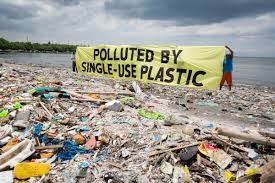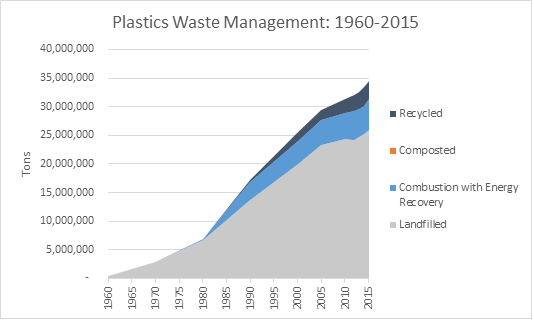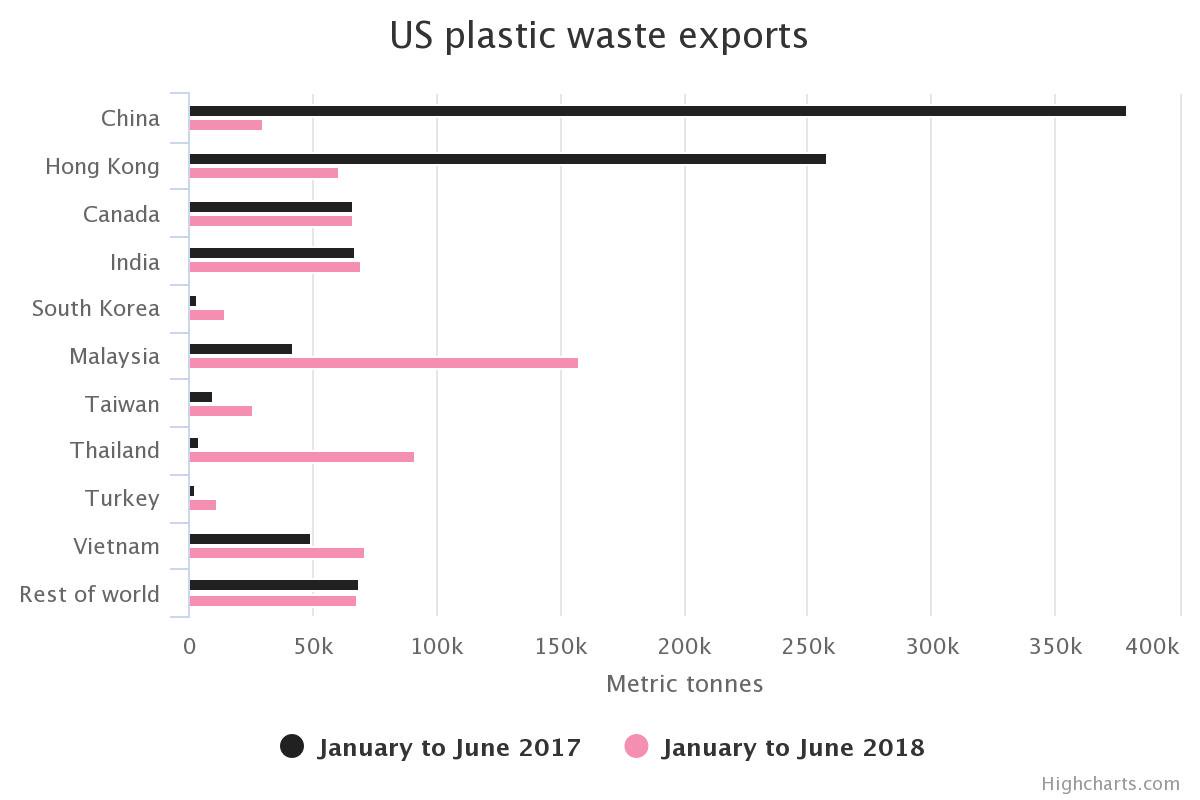 After years of neglecting recycling, talking about recyclable solutions but not delivering, and working to stop bans, the plastics packaging industry stands on a precipice. Activists have taken matters into their own hands. It’s not about bag bans anymore. Now they’re pushing for recyclable flexible packaging. Here in California environmental groups have managed to fast-track legislation (Senate Bill 54) that would mandate recycling by 2030. That could mean drastically reducing the use of polypropylene and polyester, two difficult to recycle plastics popular in a myriad of products. The bill achieves its goal by specifing a waste reduction rate of 75%. As with anything else regards plastics, what begins in California will spread nationwide within a few years.
After years of neglecting recycling, talking about recyclable solutions but not delivering, and working to stop bans, the plastics packaging industry stands on a precipice. Activists have taken matters into their own hands. It’s not about bag bans anymore. Now they’re pushing for recyclable flexible packaging. Here in California environmental groups have managed to fast-track legislation (Senate Bill 54) that would mandate recycling by 2030. That could mean drastically reducing the use of polypropylene and polyester, two difficult to recycle plastics popular in a myriad of products. The bill achieves its goal by specifing a waste reduction rate of 75%. As with anything else regards plastics, what begins in California will spread nationwide within a few years.
Given that taking plastics bags back to the grocery store currently remains the only recycling mechanism, I can’t imagine hitting the target with usage at today’s levels. Unless, of course, the state, industry, and buyers like grocery chains and consumer product companies come together and figure out how to crash recycling systems in the next few years. The technology exists, there has been just very little statewide — let alone nationwide — investment in it, and nothing close to the common curbside programs for other recyclable products. The Environmental Protection Agency grew concerned enough about recycling it pulled together work groups to tackle issues, including recycling plastics.
“Single use” packaging has become the point of attack. Most of what our company does falls under that category. We ship bags to customers who fill it with produce that gets sold in a grocery store. The bags often enough get tossed into the garbage by consumers which means they end up in landfill. We all know this because we all do it. Only 9% of plastics gets recycled currently. That puts it at the bottom of the recycling food chain as the chart shows:
 The situation is untenable. Plastic waste that doesn’t get recycled clogs up landfills. Since 1960 when plastics use exploded the tonnage dumped in landfills has grown in lock step:
The situation is untenable. Plastic waste that doesn’t get recycled clogs up landfills. Since 1960 when plastics use exploded the tonnage dumped in landfills has grown in lock step:

Much of what has gotten collected ended up in China and other Far East countries. But in 2018 the Chinese government, in an effort to combat pollution and litter, banned the import of waste plastic used to make garbage bags and produce electricity. This forced the recycling issue at home to a large extent because with the China buffer closed waste has come home to roost. Fear grew that even more plastic would end up in landfills. The impact of the Chinese decision can’t be overstated:
The industry has avoided recycling for years. Instead it spent time fighting grocery carry-out sack bans across the country with mixed success. Efforts were made with compostable materials, including plastics made from corn or sugar, but to date they remain in short supply because building factories that can process plant materials is expensive. That dovetails into the material itself which costs 2x to 3x more than regular plastic. Moreover, not many municipal or industrial composts take the plant-based plastics because of the changes needed to make it compost. So a lot of compostable packaging ends up in landfills.
To be fair the grocery take back programs have been embraced by the plastics industry yet we don’t sponsor nearly enough advertising to teach consumers where to take their plastics. The industry has allied with a certification program that tells consumers when a package is store recyclable. Yet it’s just taking off. Too often as well what ends up in the grocery plastics bin is dirty or plastics that can’t be recycled. I’ve seen used diapers end up there. I suppose someone thought the organic material could be composted. Whatever the case, obviously consumers need to be educated how and where to take back their plastic.
Over the last year the industry conversation has finally turned to recycling. The major chemical companies are putting more effort to develop plastics that qualify as recyclable. It’s a tall order because the plastics that can’t be easily recycled — polyester and polypropylene — have properties that make them popular in everything from stand-up pouches to salad packages. Mainly they provide a barrier to oxygen or carbon dioxide that other materials don’t. Ways have to be found to mimic those properties. Still, where possible, recyclable materials are replacing those that can’t be. This year we won an award from the Flexible Packaging Association for converting a package with polyester to one with polyethylene only, which can be more readily recycled.
There’s only one problem. Where to recycle? The industry has begun encouraging consumers to use the store-based bins. Some curbside recycle bin trials have happened. But many of us simply forget or can’t be bothered. Even myself, a part of the industry for 26 years, isn’t sure which bags can go back. Curbside really is the only long-term solution. We have to invest in systems that can recycle packaging and commit ourselves to solutions that get it from consumers.
As an industry we either figure this out or face perdition. Our regional trade group — the Western Plastics Association — has been pushing for solutions to the waste issue for over 15 years. Usually the bigger trade groups have ignored us or swatted down suggestions offered. Well, we can’t be divided anymore. We have to push recycling. We have to answer the questions what and how to recycle. The deadline looks like it’s 2030. The clock is ticking.
We plan to do our part. By 2024 we will stop using materials that can’t easily be recycled. That gives us five years to find replacements. They’re out there, it’ll just take a lot of experiments to find the right combinations. We have to start somewhere. If not as an industry then one at a time. I know we aren’t alone in this effort — some of the largest companies have made similar commitments — but it’s essential over the long-term the industry move united into the future. Or plastics won’t have one.

